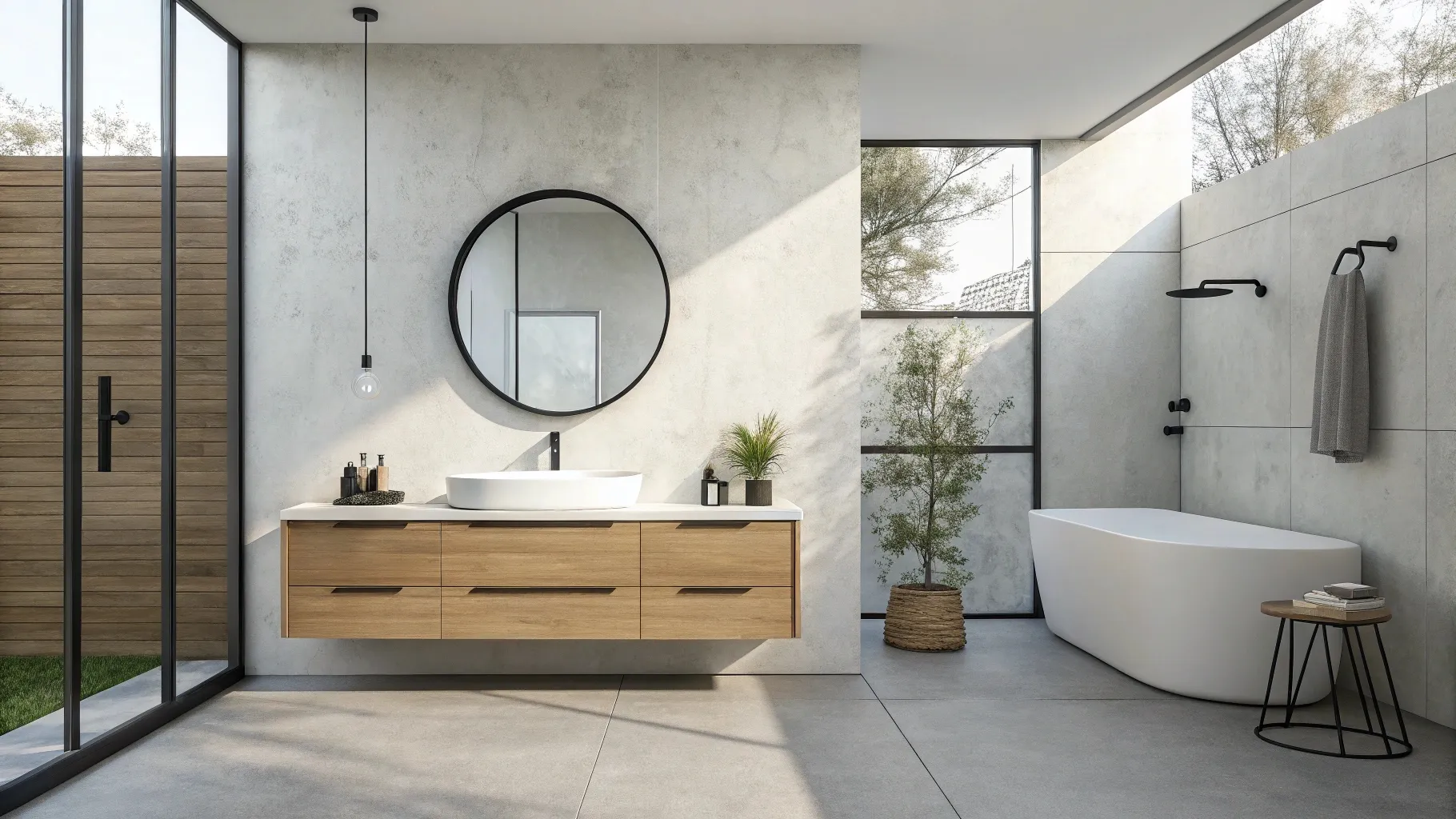Are you worried about the high costs and delays of installing hundreds of vanities? Poor installation can sink your budget and timeline fast. It is a massive headache.
Yes, bathroom vanity installation is crucial for bulk projects, especially for hotels and resorts, because improper installation causes rising costs, project delays, and operational disruptions across many units. Proper planning ensures brand standard compliance and minimizes in-service failures.
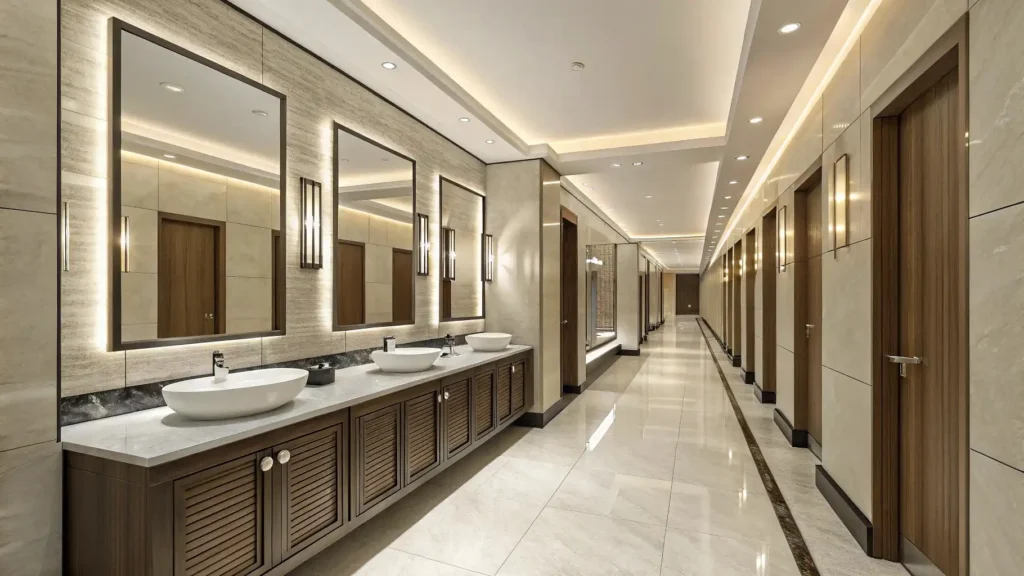
I have seen many bulk projects derailed by poor installation. My years in the factory and trading business taught me that installation is not just the final step. It is a critical phase that needs the same planning as manufacturing. Let us look at why this step is so important for large-scale procurement managers like Emma.
Table of Contents
Why Is Bathroom Vanity Installation Important for Bulk Projects?
Are you sure a small installation mistake will not become a big problem? One error multiplied by hundreds of rooms creates a disaster. You need to avoid this.
Installation is crucial in bulk projects because it directly affects product lifecycle costs, guest experience, and renovation schedules. Proper installation ensures durability and minimizes maintenance calls, saving money and upholding brand quality standards.
For large projects, installation is the difference between smooth operation and constant problems. Here are the key points for procurement managers:
- Cost Control: Poor installation leads to premature wear and failure, meaning higher repair costs later.
- Brand Standards: Installation consistency across all rooms maintains the hotel’s required look and guest expectation of quality.
- Guest Experience: A failed vanity (leaks, unstable fixtures) is a direct negative impact on a guest’s stay.
- Project Timelines: Slow or incorrect installation causes renovation delays, which means lost revenue from unavailable rooms.
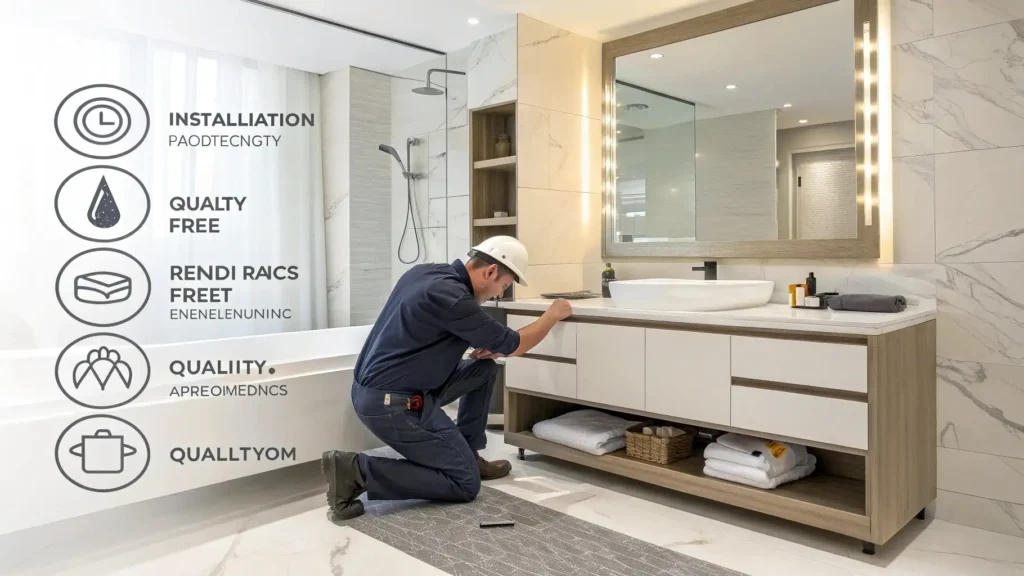
When dealing with bulk orders, like a hotel with 200 rooms, a small installation issue is actually 200 issues. Emma, the hotel procurement manager, values durability and minimizing in-service failures. Improper installation, such as using the wrong type of wall anchors or not sealing countertop edges correctly, directly threatens both. For example, if the installation crew rushes and fails to properly support an undermount sink in 10% of the rooms, that is 20 rooms where the sink could drop, causing water damage and requiring immediate, costly maintenance. A critical thinking approach breaks this down into two main areas: Lifecycle Costs and Schedule Risk
| Area | Installation Mistake | Impact on Hotel Operation | Mitigation Strategy |
|---|---|---|---|
| Lifecycle Costs | Improper sealant application | Water damage to cabinets, mold, early replacement | Mandate specific sealant types and cure times in the SOP |
| Schedule Risk | Inaccurate wall measurements | Vanity misalignment, requiring wall patchwork, delays | Pre-installation site surveys and template use for consistency |
This level of detail matters. You need a system that ensures the first vanity is installed the same way as the last one. This is not just about putting a box on a wall. It is about protecting the asset and the guest experience.
What Preparations Are Needed Before Installing a Bathroom Vanity?
No proper preparation will guarantee problems. You must plan ahead.
Before installation, you must check the site conditions, confirm utility access (plumbing and electrical), and review all shop drawings against the actual room measurements. A detailed installation Standard Operating Procedure (SOP) and staging plan are essential for efficiency.
Preparation is the silent part of a successful installation. Skipping this step is asking for delays and rework. My experience shows that the biggest time-savers happen before the tools come out.
- Site Survey: Measure every room. Do not assume all rooms are identical in a hotel, even on the same floor.
- Utility Verification: Confirm that water supply lines and drain lines are in the exact location shown on the shop drawings. Check electrical outlets for lighting or power.
- Staging Plan: Plan where the vanities will be stored before installation to avoid blocking hallways or fire exits and to ensure a smooth flow to the rooms.
- Tool and Material Check: Ensure the installation team has the correct tools, fasteners, shims, and sealants specified by the manufacturer.
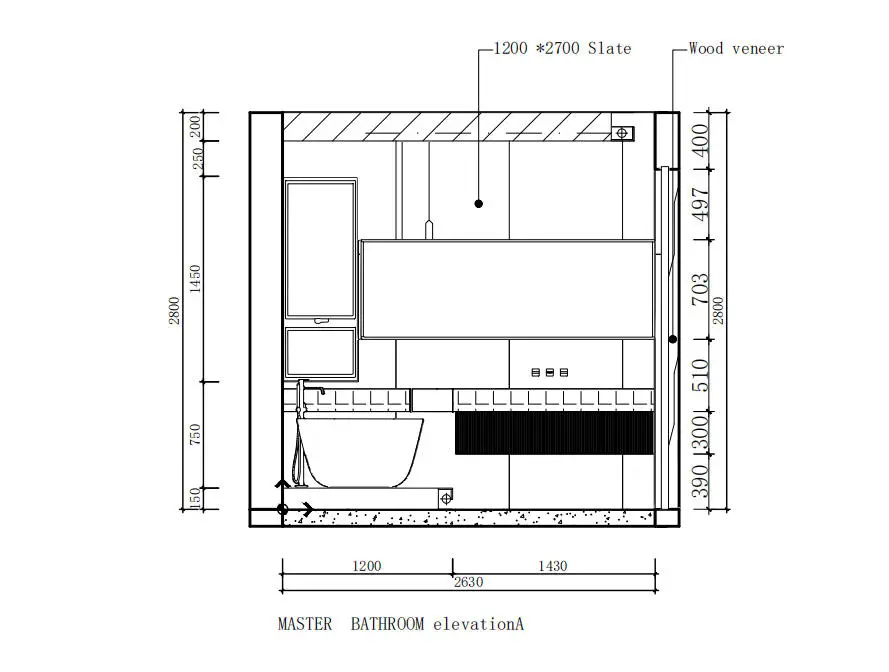
Emma’s challenge is coordinating deliveries with renovation schedules. This means the preparation phase is vital for her. A comprehensive pre-installation checklist reduces surprises that cause delays. I always tell my clients, the shop drawing is the contract. You must cross-reference it with the reality of the site. For instance, the vanity height might be critical for accessibility standards. If the rough-in plumbing is too high, it requires immediate wall demolition and rework. This is a day-long delay per room. By checking the rough-in height before the vanity arrives, you can solve the problem on paper, not with a hammer. We need to create a specific Staging and Logistics plan for bulk items.
| Task Category | Detail Checklist Item | Purpose for Bulk Project | Responsible Party |
|---|---|---|---|
| Logistics | Inventory count upon delivery | Ensure all 200 units are present and undamaged | Procurement / Site Manager |
| Site Readiness | Wall reinforcement confirmation | Verify walls can support the vanity weight long-term | General Contractor |
| Documentation | Signed-off Shop Drawings | Guarantee everyone works from the final, approved design | Project Manager |
This preparation ensures that when the delivery truck arrives, the installation team is ready to move, not ready to find problems.
What Risks Can Occur During Bathroom Vanity Installation and How to Overcome Them?
Installation risks are real and expensive. You must be prepared for them.
Common risks include material damage (e.g., chipped stone tops), plumbing misalignment, and inconsistent installation quality across many units. Overcome these by having a clear quality control sign-off process and dedicated site supervision for the installers.
Even the best-made vanity can be ruined by poor installation. Procurement managers must anticipate these common problems to protect their investment.
- Material Damage: Fragile items like stone countertops or glass mirrors can be easily chipped, cracked, or broken during transport from the staging area to the room.
- Plumbing Errors: Drain pipes or supply lines might not align perfectly with the vanity cutouts, leading to messy, non-standard field modifications.
- Inconsistent Finishes: Different installers might use different techniques, resulting in vanities that look slightly different from room to room—a violation of brand standards.
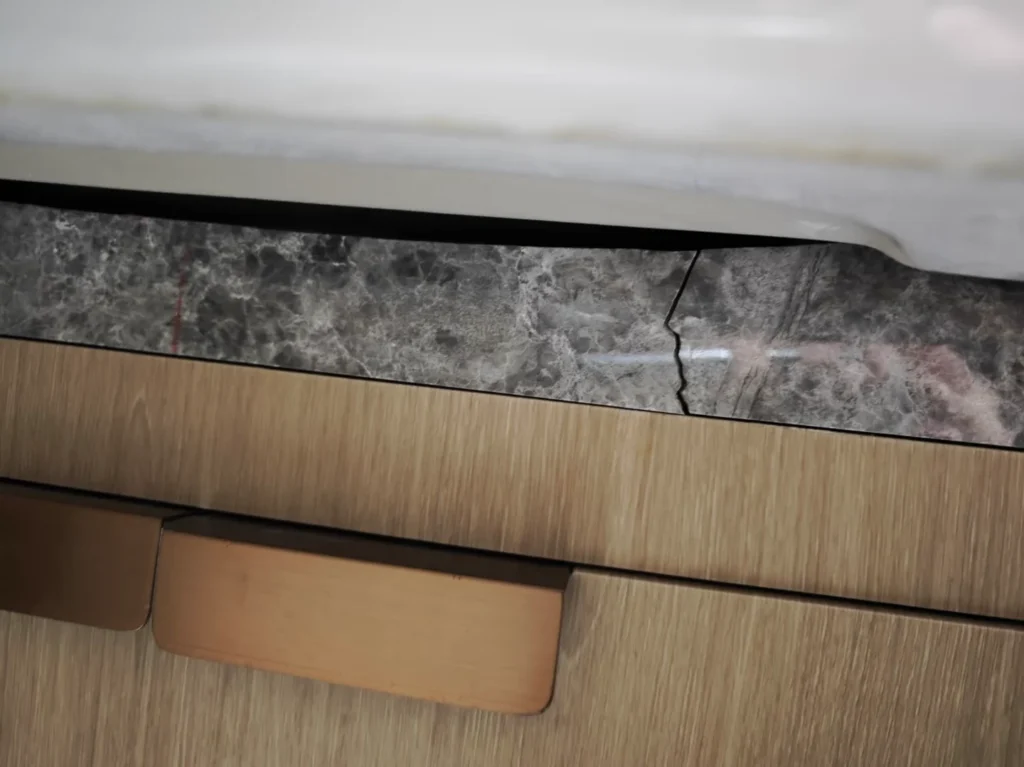
My factory experience taught me that the supply chain’s success relies on the last mile. For Emma, minimizing in-service failures is key. The largest installation risk in bulk projects is inconsistency. If one crew installs 50 units perfectly, and a second crew installs 50 units with minor errors, that inconsistency affects the whole property’s quality perception. To overcome this, a Quality Control (QC) Sign-Off is mandatory after every 10-20 units, not just at the end. For instance, a common risk is countertop joint failure. If the installers use too little epoxy or the wrong type, the joint fails in months. A supervisor must check the material used and the application method for the first few units. We can structure the risk mitigation like this:
| Risk Item | Impact on Project/Hotel | Mitigation Strategy (Proactive) | Overcoming (Reactive) |
|---|---|---|---|
| Inconsistency | Fails Brand Quality Standards | Standardized SOP and a QC checklist signed per unit | Mandatory re-training and re-installation of flawed units |
| Stone Breakage | Costly replacement and delay | Handle/lift two-person rule, padded transport carts | Order 5% extra material (overshipment) |
| Wall Failure | Vanity pulls away, safety hazard | Only use fasteners specified in the engineering drawings | Immediate structural repair and re-anchoring by certified team |
This proactive, structured approach turns potential failures into minor, manageable issues.
Does a plumber need to install a vanity?
Only using a qualified plumber avoids leaks and long-term water damage. You must prioritize this.
A licensed plumber must perform the final water supply and drain line connections to ensure leak-free operation and code compliance. While the vanity cabinet itself can often be installed by a skilled general contractor, the plumbing hookup requires specialized expertise.
This is a point of frequent confusion. While a skilled cabinet installer can mount the cabinet box to the wall and set the countertop, the most crucial part—the water connection—needs a professional.
- Code Compliance: Licensed plumbers know the local building codes for water and drainage, preventing inspection failures.
- Leak Prevention: Proper pipe fitting and sealing are specialized skills that minimize the risk of slow or catastrophic leaks inside the wall.
- Warranty Protection: Many product warranties require installation of associated utilities to be done by a certified professional.
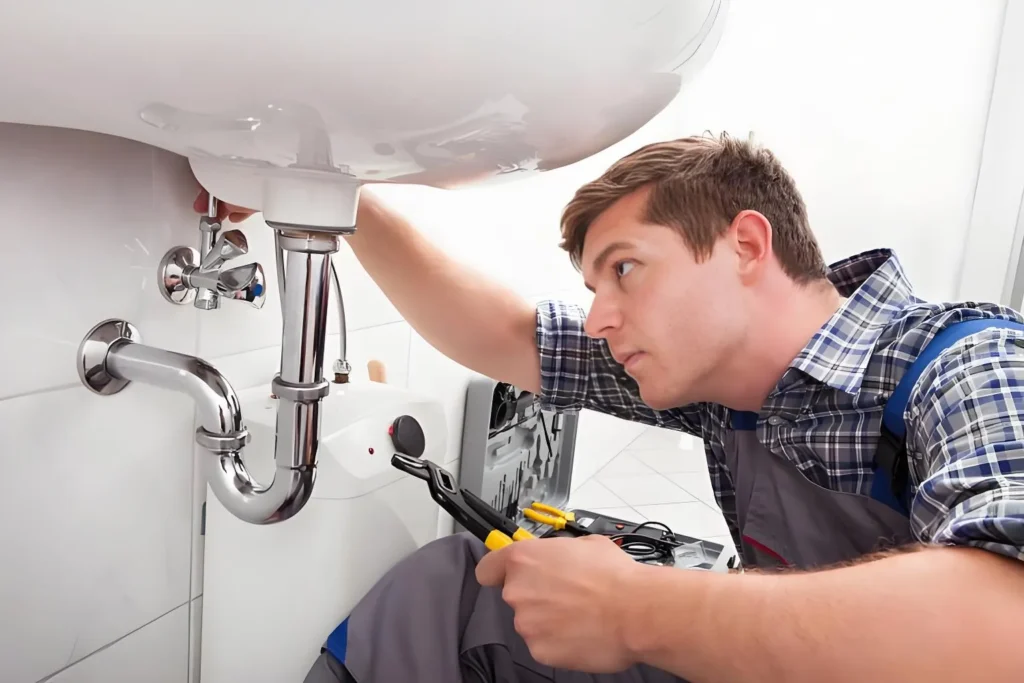
My view is simple: the vanity is furniture, but the sink is a utility. Emma manages lifecycle costs and guest experience, making the plumbing a non-negotiable professional job. A small, slow leak from a poorly sealed P-trap, which a handyman might miss, can go unnoticed for weeks, causing significant mold and structural damage to the cabinet and the wall behind it. This failure means replacing a vanity that should have lasted ten years, costing the hotel far more than the plumber’s initial fee. I always recommend a clear separation of labor in the Statement of Work (SOW):
| Task | Recommended Professional | Reason for Specialization | Impact of Improper Execution |
|---|---|---|---|
| Cabinet Mounting | General Installer/Carpenter | Focuses on structural support and alignment | Misalignment, vanity falling off the wall |
| Countertop Setting | General Installer/Stonemason | Focuses on leveling, sealing, and secure setting | Cracks, water infiltration into the cabinet |
| Water/Drain Hookup | Licensed Plumber | Requires knowledge of codes, pressure, and sealing | Leaks, water damage, potential mold growth |
This strict division of responsibility ensures that the most critical, failure-prone component—the water connection—is handled by the person legally and professionally qualified to do so. Never risk your entire project’s long-term success to save a small amount on plumbing labor.
What is the average cost to install a bathroom vanity?
Unforeseen costs can destroy your budget. You need a reliable, fixed rate.
The average cost to install a single vanity ranges from $200 to $800, but for bulk hotel projects, you should negotiate a lower, fixed unit rate, often between $150 and $400 per unit, which includes the cabinet, countertop, and basic plumbing hookup labor.
The cost structure changes significantly when you move from a single home renovation to a bulk hospitality project. Emma needs cost certainty, not an average range.
- Economies of Scale: Installers offer better rates for hundreds of units because travel and setup time are drastically reduced.
- Scope Definition: The rate depends heavily on whether it includes all labor (cabinet mounting, countertop setting, mirror hanging, and full plumbing hookup).
- Project Complexity: Simple floor-mount vanities cost less to install than complex, custom, wall-hung units requiring internal blocking or reinforcement.
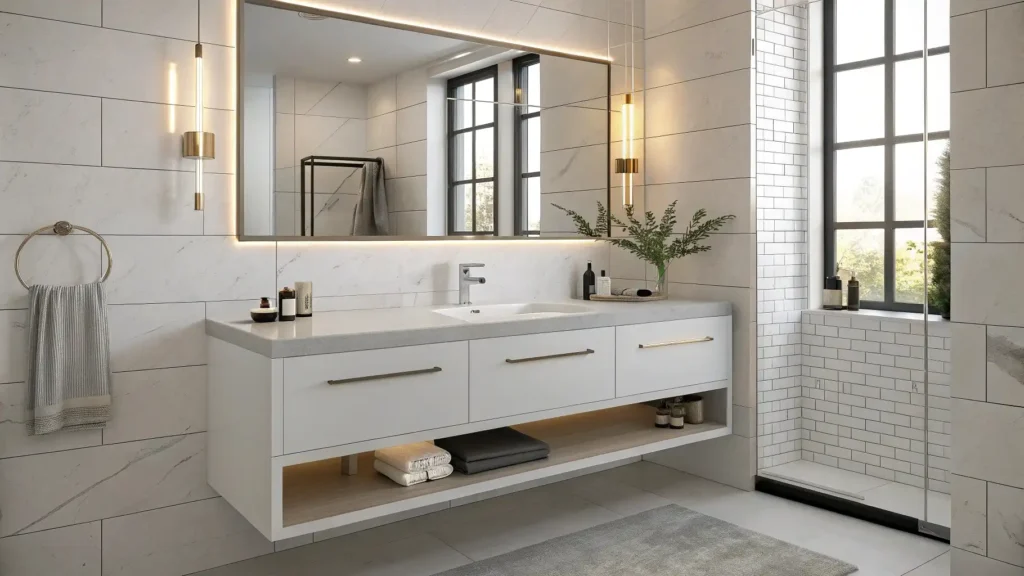
When I worked on large-scale apartment projects, we never accepted an hourly rate; we demanded a fixed unit cost. This provides the cost certainty Emma requires for her procurement budget. The key is clearly defining “install.” For bulk projects, the installation quote should be a “turn-key” price per unit, including all accessories supplied with the vanity. For example, a quote of $300 per unit for 200 units gives a total installation cost of $60,000. This is predictable. When breaking down the price, we need to consider all the variables to avoid change orders later. The cost varies most based on the labor rate in the United Arab Emirates versus other countries and the complexity of the unit itself.
| Cost Component | Low-Complexity Unit (Bulk) | High-Complexity Unit (Bulk) | Key Cost Driver |
|---|---|---|---|
| Cabinet Mounting | $50 | $80 | Wall type (drywall vs. concrete) |
| Countertop/Sink Set | $60 | $100 | Stone type and complexity of cutouts |
| Plumbing Hookup | $70 | $120 | Complexity of faucet and drain assembly |
| Total Est. Labor Per Unit | $180 | $300 | Negotiated Scope of Work |
Always ensure your contract locks in this unit rate and lists any work not included, such as major wall re-framing. This protects your budget against creeping costs.
How to Choose the Right Installation Service for Bulk Projects?
Cutting costs here will always cost you more later. You need experience and reliability.
Choose an installation service based on proven experience with large-scale commercial projects, not just the lowest price. Look for evidence of a high-volume Quality Control plan, sufficient insurance, and a strong track record of meeting strict project timelines.
Choosing the right installation partner is a strategic decision for procurement managers. You need a team that understands the pace and precision required in a commercial setting like a hotel.
- Commercial Experience: The installer must have a portfolio of projects for hotels or multi-unit residential buildings, not just single-family homes.
- Insurance and Liability: They must carry adequate liability insurance to cover property damage or worker injury on your site.
- Manpower and Speed: The service must show they have the team size to complete hundreds of installations within your non-negotiable renovation window.
- References and QC: Ask for references from other project managers and demand to see their internal Quality Control process for bulk work.
My best advice to Emma is to value process over price. A cheap installer can delay your project for weeks, costing you more in lost revenue than you saved on labor. When vetting a service, I look for two main things: their system for dealing with consistency and their process for managing logistics. The right service will have a dedicated site supervisor who is not installing but only checking. This supervisor ensures that the brand standard, down to the tightness of a door hinge, is the same in room 101 as it is in room 501. They should be able to provide a clear schedule showing the maximum number of vanities they can install per day, based on their crew size. This is key for managing delivery coordination. Ask the potential installer to provide a detailed table:
| Requirement | Preferred Installer Response | Why It Matters for Bulk | Red Flag Response |
|---|---|---|---|
| QC Process | "Supervisor checks every 10 units with a 15-point checklist." | Ensures consistency across hundreds of rooms | "Our guys are good, they just know what to do." |
| Schedule/Pace | "We can commit to 15 full installs per day with a crew of 6." | Provides certainty for the renovation timeline | "We'll see how fast the first few go." |
| Post-Install | "We offer a 1-year guarantee on all labor and sealing." | Protects the hotel against immediate in-service failures | "Once we leave, the warranty is with the manufacturer." |
A professional bulk installer treats the job like a manufacturing process, where repetition and adherence to standards are the most important goals.
Conclusion
Yes, installation is vital for bulk projects. Improper work causes high costs and delays. We help you master the entire supply chain, ensuring your projects finish on time and on budget. Visit georgebuildshop.com to learn more.


